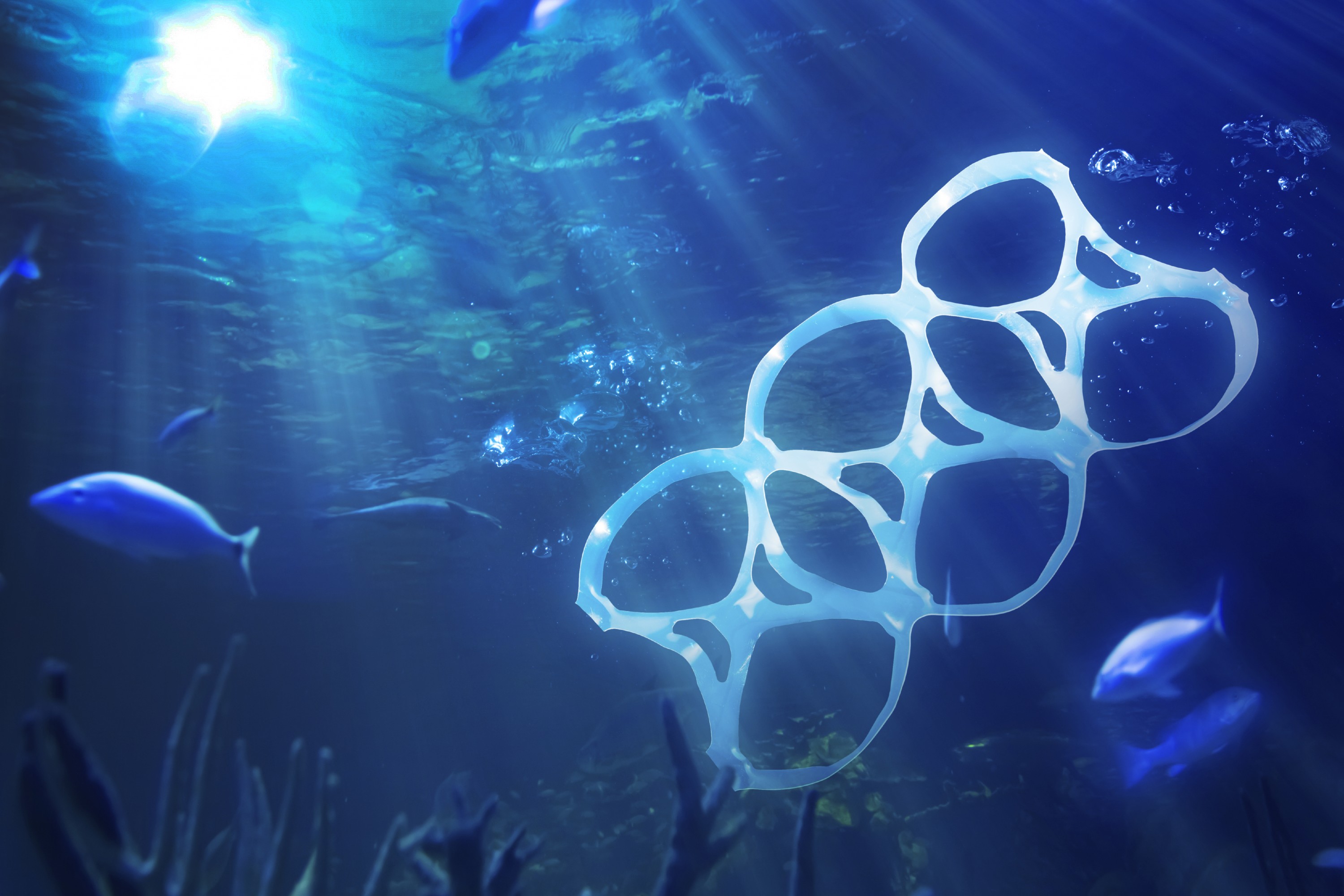Two UConn Avery Point faculty were among 600 marine experts from many countries who participated in the recent United Nation’s World Ocean Assessment, a global inventory of the state of the marine environment and problems threatening to degrade the oceans. This just-released international study marks the first comprehensive analysis on the ways humans benefit from and affect the world’s oceans, which cover more than 70 percent of our planet.
The experts examined a myriad of issues affecting ocean ecosystems and marine biodiversity, and their 55-chapter assessment provides analysis on topics ranging from climate change, ocean acidification, fishing, and shipping practices, to land-based fertilization activities, offshore hydrocarbon industries, and marine debris, among other topics. UConn marine sciences professor Ann Bucklin and emeritus professor Peter Auster (who is also affiliated with Mystic Aquarium), served as co-authors on two different chapters, focused respectively on global patterns of biodiversity and threats to seamount communities.
Bucklin discussed the World Ocean Assessment with UConn Today.
Q. Can you provide a quick overview of what is known about the condition of the world’s oceans?
A. A good summary comes from a 2014 report by the Intergovernmental Panel on Climate Change (IPCC), which concluded that warming of the climate system is ‘unequivocal,’ with unprecedented changes over decades to millennia. The surface of the global ocean has warmed by about 1.7 degrees F since 1880. During the past three decades, approximately 70 percent of the world’s coastal areas have experienced significant increases in sea-surface temperature.
High-latitude ecosystems are undergoing even more rapid change; the Arctic Ocean is warming nearly twice as fast, and reduced sea ice is affecting a wide range of species. Global warming is resulting in an increasingly poleward distribution of many marine species.
Greenhouse gas concentrations are unprecedented in at least the past 800,000 years; about 26 percent of the anthropogenic CO2 is absorbed by the ocean, resulting in acidification of seawater. We are only recently beginning to understand what impact this may have on marine organisms and ecosystems.
Warming is also affecting salinity of the oceans, with significant impacts on water column structure (stratification) and pathways of ocean circulation, and follow-on impacts for marine life. Warming is reducing net primary production of the phytoplankton upon which marine food webs depend, causing marine microbes (bacteria) to dominate, and reducing the carrying capacity of harvestable fish stocks.
In short, climate change is now causing marked shifts in ocean environments and ecosystems, with dramatic consequences for marine communities, food webs, and species. Beyond the next few decades, if emissions continue to rise unchecked, the risks are profound. Climate impacts may alter patterns and pathways of ocean circulation and mixing; melt polar ice caps; and cause mass extinctions of plants and animals.
Q. The UN assessment marks the first time that scientific experts worldwide have compiled an inventory of current knowledge on the status of the world’s oceans. What is the assessment attempting to do? Are there many gaps in our knowledge of the oceans?
A. The first World Ocean Assessment provides an important scientific basis for consideration of ocean issues by governments, intergovernmental processes, policy-makers, and others involved in ocean affairs. With regard to global patterns of marine biodiversity, the assessment provided clear documentation that climate change will lead to restructuring of marine community diversity. The consequences of this restructuring on ocean ecosystem productivity, resilience, and provision of goods and services are among the many remaining unknowns. We need to know more about the dynamics of biodiversity hotspots, where species numbers and abundances are consistently higher than adjacent areas. Many regions of the deep sea remain unexplored, and global-scale patterns of deep sea diversity are largely unknown. Knowledge of diversity and distribution is biased towards large, charismatic species (such as whales) and economically valuable species (such as tuna); enormous challenges remain to measure and understand the diversity of the tiny organisms (such as bacteria, viruses, and plankton) that predominate ocean life in both numbers and biomass.
Q. How do scientists assess the state of the oceans and seas? For example, several years ago you directed a global census of the sea’s tiniest creatures – zooplankton, that spend their lives drifting on currents – involving thousands of researchers in 80 countries collaborating to describe the ocean’s biodiversity.
A. Many of the 29 authors of the UN World Ocean Assessment chapter on Global Patterns in Marine Biodiversity (Chapter 34) were lead scientists in the Census of Marine Life, a 10-year (2000-2010) international effort to assess the diversity, distribution, and abundance of marine life – a task never before attempted on this scale. I led the Census of Marine Zooplankton. The Census involved 2,700 scientists from 80+ nations, involved 540 expeditions, and yielded more than 2,600 scientific publications, and discovered more than 6,000 potential new species. This enormous effort – a highlight of my professional life – informed many of the conclusions in our descriptions of marine biodiversity in the UN World Ocean Assessment.
Q. Do realistic global solutions exist for mitigating or reversing the damage from traditional models of economic activity such as carbon emissions, over-fishing, and over-fertilization?
A. Many of the current threats to the world’s oceans are inextricably bound with the problems of climate change, and can only be addressed as part of those issues. However, there are approaches that can successfully address some threats, assuming critically-needed resources, organizational engagement and will-power, and technical skills and knowledge. These include: reducing inputs of hazardous substances, pathogens, and nutrients; improving management and regulation of fisheries and aquaculture; improving the control of offshore hydrocarbon industries and offshore mining; and establishing and maintaining marine protected areas.
For more about Bucklin’s work on the Census of Marine Zooplankton, see Marine Life Census Reveals Previously Unknown Sea Creatures and Decade of Discovery Plumbs Oceans.



